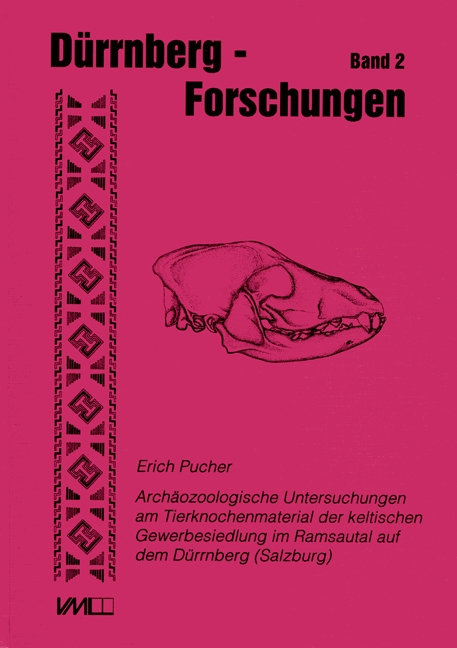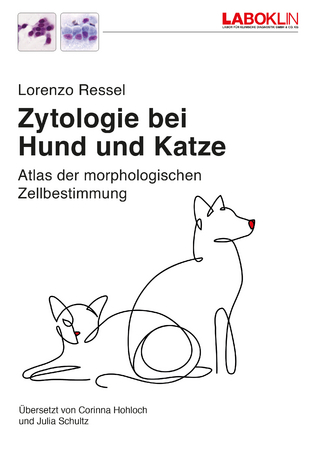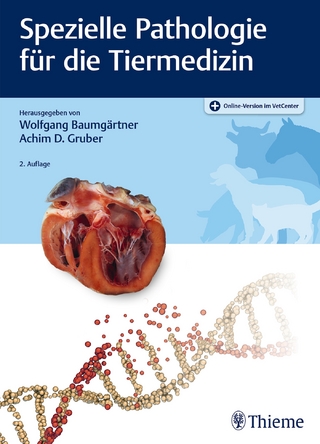
Archäozoologische Untersuchungen am Tierknochenmaterial der keltischen Gewerbesiedlung im Ramsautal auf dem Dürrnberg (Salzburg)
Seiten
1999
VML Vlg Marie Leidorf (Verlag)
978-3-89646-752-2 (ISBN)
VML Vlg Marie Leidorf (Verlag)
978-3-89646-752-2 (ISBN)
- Titel ist leider vergriffen;
keine Neuauflage - Artikel merken
Mit der Tierknochenanalyse wird einer der größten Fundkomplexe der Grabungen 1988-89 vorgelegt. Damit schließt sich für das südliche Mitteleuropa die Lücke zwischen dem späthallstattzeitlichen Material von der Heuneburg und den jüngerlatenezeitlichen Knochen aus Oppida. Die Neufunde datieren von Lt A bis C1 (5.-2. Jh. v.Chr.), wobei durch die gute Stratifizierbarkeit vier Zeithorizonte (H1-H4) getrennt werden konnten. Nach der Anzahl überwiegt (bei 15.589 bestimmbaren Resten) das Rind (78,4%) gegenüber Schwein (11,5%), Schaf / Ziege (8,45%) und Wild (0,7%). Die Rarität von Jungtieren entspricht dem nichtagrarischen Charakter der Siedlung, in die erwachsene Tiere importiert wurden, wobei im Laufe der Zeit immer ältere Tiere und mehr Ochsen verzehrt wurden, was städtischen Versorgungsstrukturen und dem wachsenden Bedarf an Arbeitstieren zuzuschreiben ist. Rinder waren in der Region seit der Urnenfelderzeit etwa so kleinwüchsig wie in Manching, Schafe, Schweine und Hunde hingegen größer. Beiträge zu den archäologischen Befunden (Th. Stöllner) und zu 10-11 Neugeborenenskeletten aus der Siedlung (K. Wiltschke-Schrotta) runden den Band ab.
The analysis of the animal bones deals with one of the largest find complexes of the 1988-89 excavations. It closes the gap existing in southern central Europe between the Late Hallstatt material from the Heuneburg and the Late Latène bone complexes from Oppida. The recent finds date into Lt A to C1 (5th to 2nd cent. B.C.). Due to an excellent stratigraphy it was possible to discern 4 time horizons (H1 to H4). With regard to numbers (of 15,589 classifiable remains) cattle (78.4%) dominates over pigs (11.5%), sheep / goat (8.45%) and game (0.7%). The rarity of juvenile animals corresponds with the non-agrarian character of the settlement, into which adult animals were imported. In the course of time, older and older animals and particularly more oxen were slaughtered. This is explained by urban structures of supply and a growing demand for work animals. In the total region, cattle had been similarly small as in Manching since the Urnfield period, while sheep, pigs and dogs were taller. Contributions on the archaeological evidence (Th. Stöllner) and on 10 to 11 skeletons of neonates from the settlement (K. Wiltschke-Schrotta) complete the volume.
The analysis of the animal bones deals with one of the largest find complexes of the 1988-89 excavations. It closes the gap existing in southern central Europe between the Late Hallstatt material from the Heuneburg and the Late Latène bone complexes from Oppida. The recent finds date into Lt A to C1 (5th to 2nd cent. B.C.). Due to an excellent stratigraphy it was possible to discern 4 time horizons (H1 to H4). With regard to numbers (of 15,589 classifiable remains) cattle (78.4%) dominates over pigs (11.5%), sheep / goat (8.45%) and game (0.7%). The rarity of juvenile animals corresponds with the non-agrarian character of the settlement, into which adult animals were imported. In the course of time, older and older animals and particularly more oxen were slaughtered. This is explained by urban structures of supply and a growing demand for work animals. In the total region, cattle had been similarly small as in Manching since the Urnfield period, while sheep, pigs and dogs were taller. Contributions on the archaeological evidence (Th. Stöllner) and on 10 to 11 skeletons of neonates from the settlement (K. Wiltschke-Schrotta) complete the volume.
| Reihe/Serie | Dürrnberg Forschungen. II. Abt. Naturwissenschaft |
|---|---|
| Zusatzinfo | 20 Abb., 108 Tab., 9 Diagr., 5 Fototaf. |
| Sprache | englisch; deutsch |
| Maße | 210 x 298 mm |
| Gewicht | 680 g |
| Einbandart | kartoniert |
| Themenwelt | Veterinärmedizin ► Klinische Fächer ► Pathologie |
| Schlagworte | Archäozoologie • Eisenzeit • Ernährung • Kelten • Latènezeit • Pathologie • Siedlungsarchäologie |
| ISBN-10 | 3-89646-752-2 / 3896467522 |
| ISBN-13 | 978-3-89646-752-2 / 9783896467522 |
| Zustand | Neuware |
| Haben Sie eine Frage zum Produkt? |
Mehr entdecken
aus dem Bereich
aus dem Bereich
Atlas der morphologischen Zellbestimmung
Buch | Softcover (2021)
LABOKLIN GmbH & Co. KG (Verlag)
55,95 €


